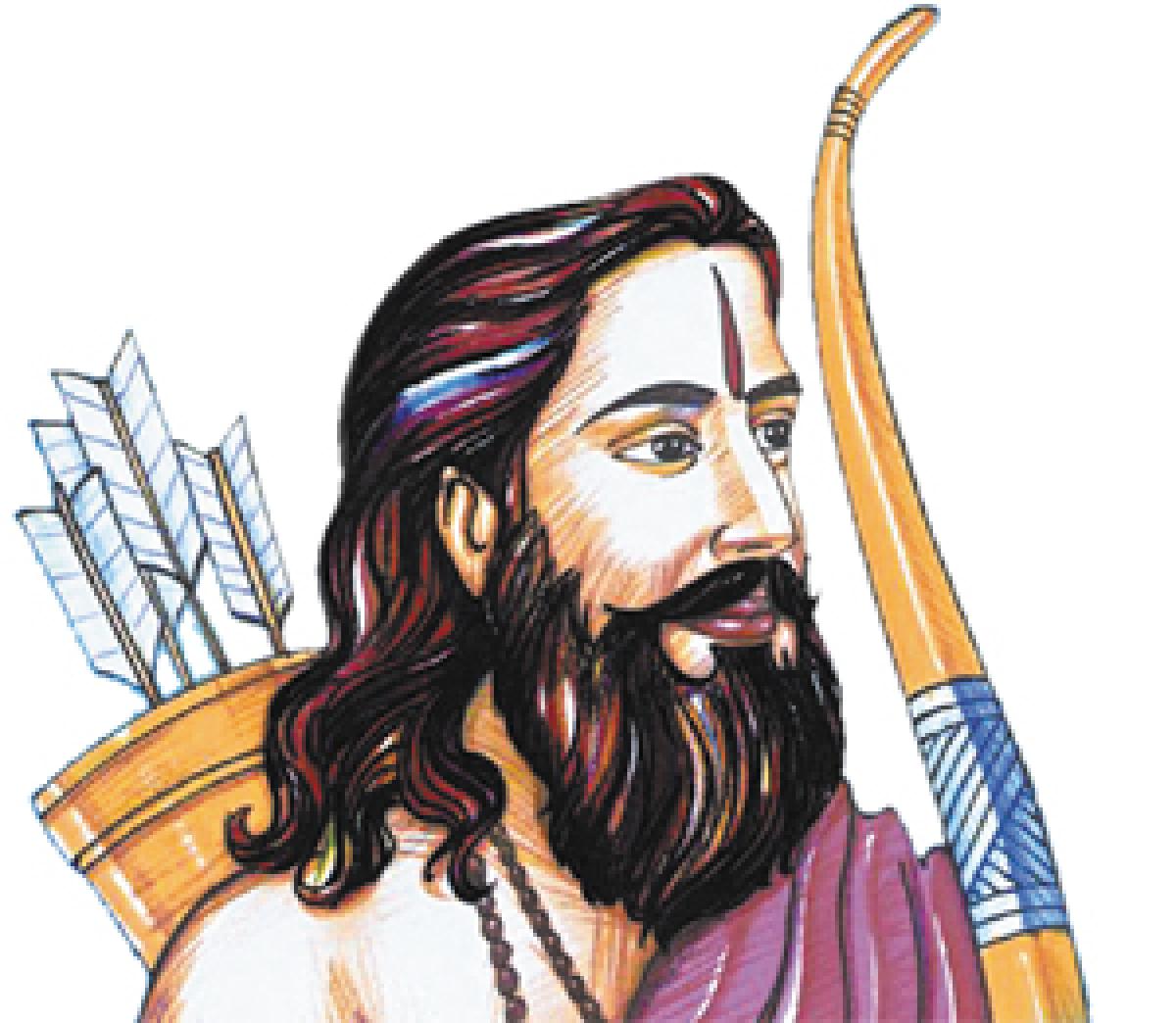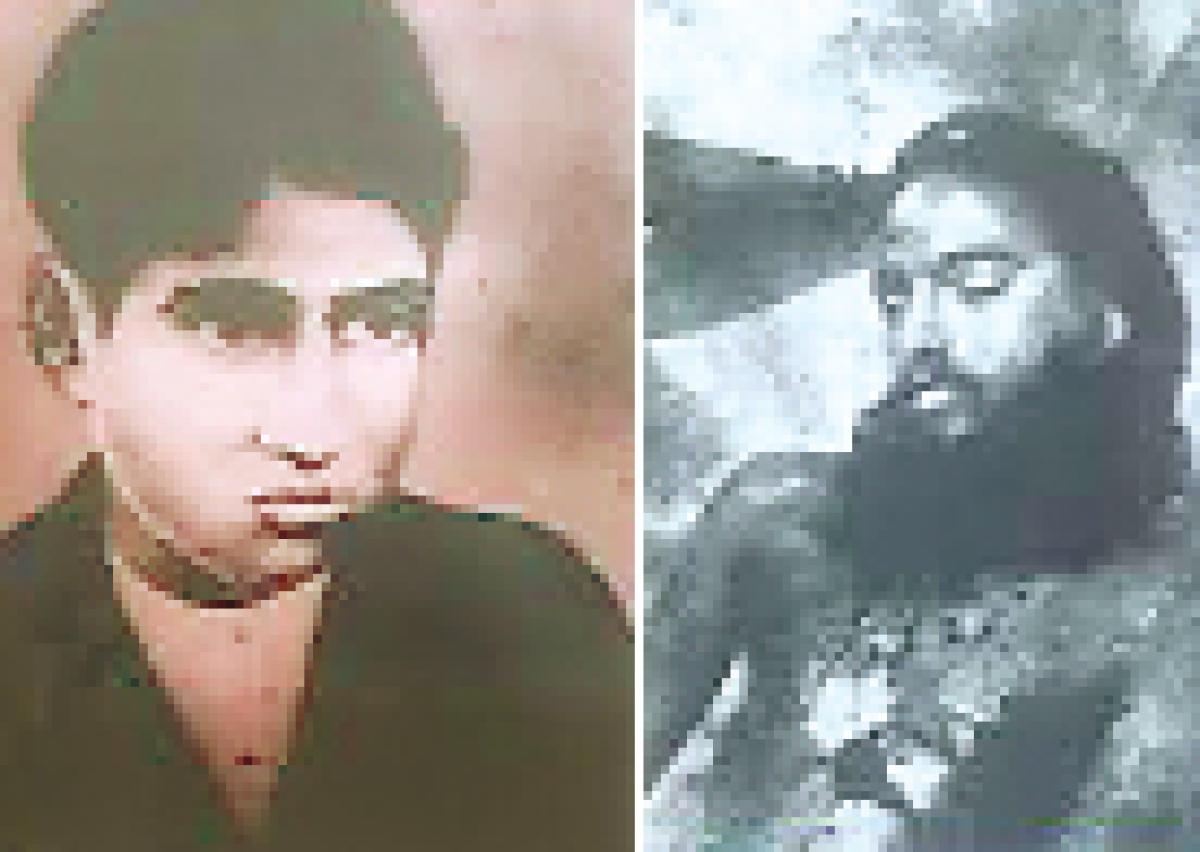Live
- Sudanese army recaptures capital of Sinnar State in central Sudan
- Kishkindha Kaandam Review: Some movies prove not to compromise in having a good cinematic experience and this is one of them
- Son-rise: Hemant Soren grows taller as tribal leader, makes father proud
- ISL 2024-25: 10-man NorthEast United FC hold on to take three points vs Punjab FC
- BGT 2024-25: Jaiswal’s application, commitment to form a partnership was so impressive, says Gilchrist
- BGT 2024-25: Personally, I am very happy with my performance, says Harshit Rana
- Pakistan's Lahore remains world's most polluted city despite light drizzle
- Asha Nautiyal retains Kedarnath for BJP, to be back as MLA after 12 years
- India leads world in science, innovation research: Minister
- Flash flood in Indonesia's South Tapanuli claims two lives
Just In

The Forgotten Hero. When it is Independence Day, every year, we remember many heroes who have lost their lives fighting with the British during the freedom struggle.
 When it is Independence Day, every year, we remember many heroes who have lost their lives fighting with the British during the freedom struggle. India remembers great heroes like Bhagat Singh, Chandrasekhar Azad, Jhansi Lakshmibai and many others. However, there are many forgotten heroes who did not find a place in the history of Indian freedom struggle. Alluri Srirama Raju who is popularly known as Alluri Sitarama Raju is indeed one such forgotten hero.
When it is Independence Day, every year, we remember many heroes who have lost their lives fighting with the British during the freedom struggle. India remembers great heroes like Bhagat Singh, Chandrasekhar Azad, Jhansi Lakshmibai and many others. However, there are many forgotten heroes who did not find a place in the history of Indian freedom struggle. Alluri Srirama Raju who is popularly known as Alluri Sitarama Raju is indeed one such forgotten hero.
Sitarama Raju took on the might of the British with handpicked followers and frightened the great empire of the British. He was the hero, who strived for the unprivileged section of the society, the tribals. He had a regular childhood and rose to become the inspiration for crores of people in fighting with the ruthless British.
Though all successive governments mention him during their election speeches and on special occasions like Independence Day, none of them have bothered to give due recognition to the man who waged an armed struggle against the mighty British forces for three years. Padala Veerabhadra Rao, founder-president, State Alluri Sitarama Raju Yuvajana Sangham laments that so far, the sacrifices of Alluri were downplayed. So far the governments have not even installed a statue of Alluri in Rajahmundry where he had spent almost half of his life, and all this is inspite of the Rajahmundry Municipal Council passing a resolution to erect a statue between the two bridges where, now the statue of NTR is built. The veteran freedom fighters of Rajahmundry demand that the government should erect a statue of Alluri besides the statue of Rajaraja Narendra and that the proposed tourist destination around Havelock Bridge should be named after him.
The Alluri Yuvajana Sabha remind that Punjab State government is celebrating the death anniversary of Bhagat Singh and the Telangana government has decided to honour the glory of the martyr Komaram Bheem, who took on armed struggle against the Nizam with the inspiration of Alluri Sitarama Raju; but there is none to honour the martyr.
Even the police station which Sitarama Raju had attacked, now lies in ruins and soon will vanish if the government does not take measures to protect it, the old-timers in Rajahmundry rue. According to some of them, there is great potential to convert the forest areas near Rajahmundry and mark the historic places to showcase to the world the greatness of Alluri. In fact, with little effort, the entire history of Alluri can be recreated.
Alluri’s father Venkata Rama Raju had a photo studio at Deluxe Centre in Rajahmundry after he shifted to the town in 1898. His father was interested in journalism and was also a great painter, but no one remembers all these important facets of history.
Born on July 4, 1897 in Pandrangi village of Padmanabham mandal in Visakhapatnam district at his grandmothers’ house to Venkata Rama Raju and Suryanarayanamma, Raju studied from classes 1 to 6 in Rajahmundry, from 1904 to 1910. He studied class 7 at National School in Ramachandrapuram in 1911 and class 8 at PR High School, Kakinada in 1912. He did his class 9 at AVN High School, Visakhapatnam and Taylor High School in Narasapuram in 1913. He studied Sanskrit, Vedas and Astrology in Kotananduru in Tuni mandal before he went on pilgrimage to north India from 1915 to 1917.
It is said that Alluri Sitarama Raju along with his family used to bathe in the River Godavari during their stay in the town. Once, Sitarama Raju saluted a Britisher riding on a horse and his father immediately slapped him for this act, told him how the British prevailed in India and about the freedom struggle. His father was his first guru in patriotism. After understanding how the British had been fleecing the poor and innocent, particularly the tribals, Sitarama Raju was inclined to fight for freedom.
He felt that an armed struggle was the only solution to face the might of the British. While pursuing his studies at Kakinada, Alluri Sitarama Raju came in contact with a notable freedom fighter, Madduri Annapurnayya, and Rallapalli Atchuta Ramayya, a scholar of high repute.
In 1857, during the first war of independence, thousands of tribals of Gond land laid their life for their country. Alluri Sitarama Raju went deep into the forests of the Gond land to meet the tribals and inspire them to fight for India's independence.
In the tribal areas, poor and illiterate tribal people were exploited and oppressed blatantly by the British. Since the tribals were not united, the British took advantage of them and deprived them of their rights. Alluri Sitarama Raju inspired and united the different tribes of the area, trained them in skills of guerrilla warfare and proved to be a terror for the British. Soon he was ready to attack the enemy with his army.
On August 22, 1922, he held the first meeting near Devi temple at Nadimpalem village, which was the home of his close associates, Mallu Dora and Gantam Dora. It took some time to win over the confidence of the tribals. By the time he held the second meeting, his tribal army initiated their struggle by raiding three police stations – Chintapalli police station, Krishnadevipeta police station, and Rajavommangi on three consecutive days. After the raids, they captured a huge number of guns, bayonets, cartridges and swords. They even freed a revolutionary, Veerayya Dora from jail. Later, he attacked KD Peta police station on August 23 and Rajavommangi police station, thus the British remained as mute spectators.
The British Army was alerted of his actions. Platoons of police and army were ordered to arrest Alluri Sitarama Raju. He again attacked the British Army at Peddavalasa and defeated them, as a result of which, they had to bear heavy casualties and finally retreated.
From that day onwards there was a regular warfare between Raju and the British, at the end of which, Raju emerged triumphant. For nearly two years (1922 to 1924), he terrorized the British Army and was the ruler of the vast area.
After a small break, Alluri held a secret meeting with the associates at Thenela Mongi in Mallavaram Mamillu village of Addateegala mandal in East Godavari and decided to attack police stations again. He attacked the Addateegala and Rampa Chodavaram police stations. Then the British government appointed Major Goodall to nab Alluri and appointed Rutherford as the collector and special officer.
Alluri had central office at Pydiputta in Addateegala mandal in East Godavari district from where he used to plan his attacks. Fierce battle took place at Kondapalli village in Rajavommangi mandal between Alluri Sitarama Raju and the British from May 1 to 6, 1924. Later, the villagers shifted Alluri to Visakhapatnam district. Alluri had a conference hall at Mampa where the British finally caught him while he was cleaning his injuries in a water body.
Samson Raj

© 2024 Hyderabad Media House Limited/The Hans India. All rights reserved. Powered by hocalwire.com







